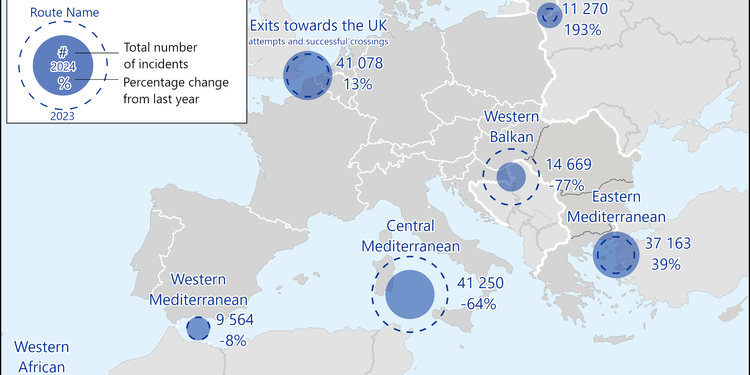Brussels – In the first eight months of this year, according to preliminary data collected by Frontex, the European Border and Coast Guard Agency, the number of irregular crossings of the EU’s external borders fell by 39 per cent.
The percentage also shows a decrease with respect to July preliminary data, with substantial differences in the various routes.
In the Central Mediterranean, which remains “the most active route to the EU,” there is a 64 per cent decrease in January–August, standing at 41,250 landings. Frontex explains that the decline is due to preventive measures taken by the Tunisian, Libyan, and Turkish authorities and probably also to agreements signed by the EU and individual member states with the main countries of last departure.
The situation is different in the Eastern Mediterranean, which shows a 39 per cent increase. The means employed by criminal networks are also changing: “They are increasingly using speedboats to reach the Greek islands, and they are more difficult to detect than dinghies.” Another route with a substantial decrease of 77 per cent is the Western Balkans, where the number of landings detected is 14,669.
On the other hand, substantial increases are noted on the eastern land borders, increased by 193 per cent, reaching about 11,270 landings, and on the African route, with an unprecedented number of records. By the end of August, according to Frontex data, the total number of arrivals was more than 25,500, a 123 per cent increase over the same period last year. On the English Channel route, where a shipwreck occurred in early September, the number of records in the first eight months of 2024 increased by 13 per cent.
English version by the Translation Service of Withub






![automotive [foto: ACEA]](https://www.eunews.it/wp-content/uploads/2021/09/auto.jpg)